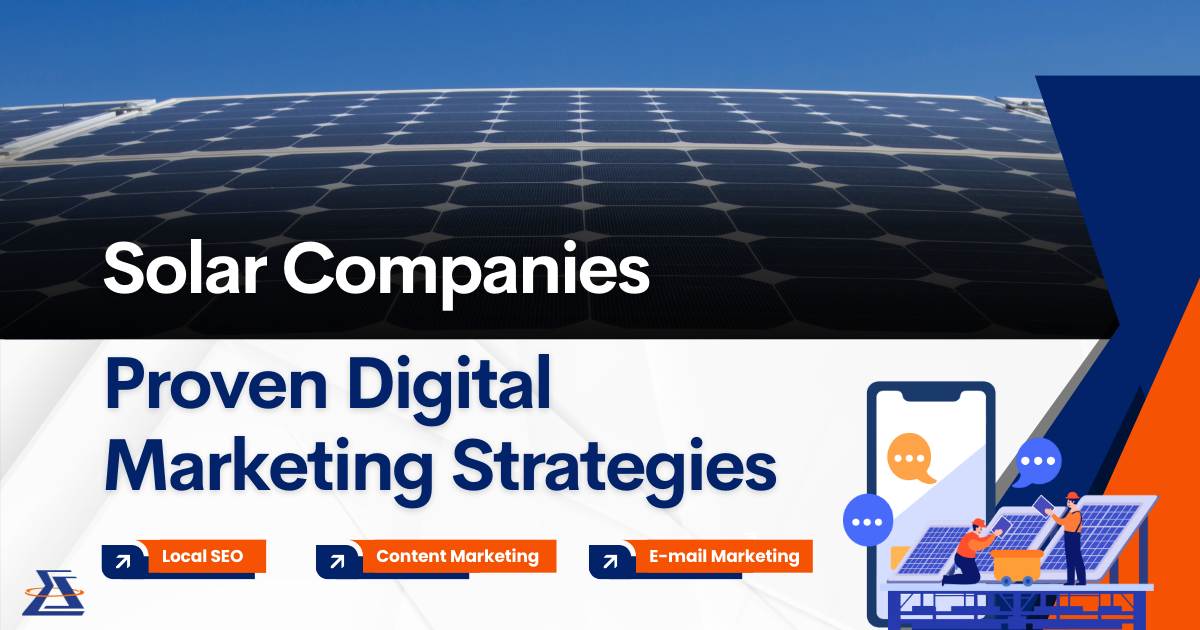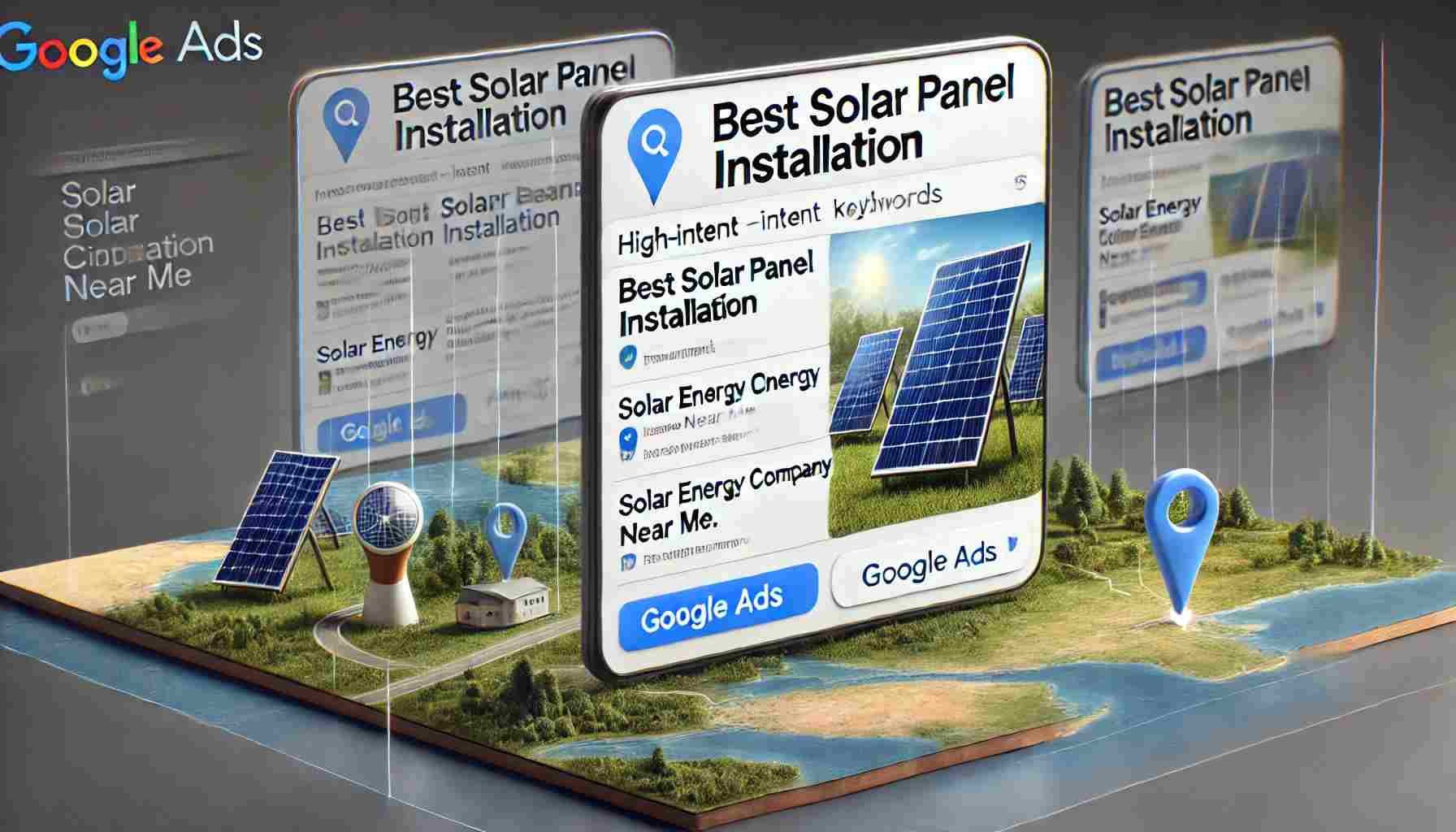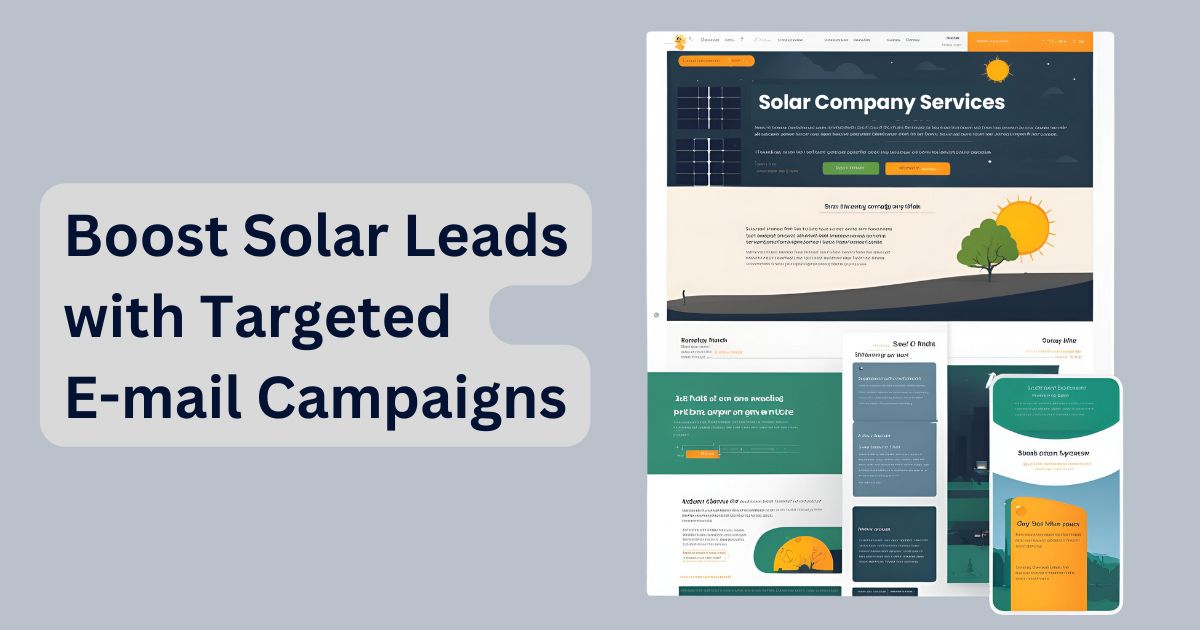Introduction: Why Digital Marketing is Key to Solar Companies’ Success

The solar energy industry is going upwards on a growth curve, with more growing interest in the renewable sector globally. However, this competitive space demands that solar companies have something more than a strong product line-it requires the strength of effective digital marketing. Solar energy digital marketing encompasses different strategies from SEO, PPC, and content marketing that help companies attract and engage more potential customers and help convert them to higher ROI sources.
We will study here the solar company marketing strategies that maximize ROI. These include solar company lead generation, SEO, and the growing popularity of social media marketing. This paper will also outline tips on how to monitor and assess the effectiveness of such a strategy to reap a positive ROI.
Understanding Solar Marketing ROI

Solar marketing ROI would be the measure that will explain exactly what you are getting in terms of return on investment for your marketing campaigns. It helps in understanding the amount of money being generated through solar company sales in relation to how much is spent on marketing. The solar companies must be choosy about efficient and focused marketing campaigns, and the best returns can be obtained by using these channels.
Factors Affecting Solar Marketing ROI:
- Cost-Per-Lead (CPL): The average CPL for a solar company is a function of which marketing channel they use, e.g. Google Ads versus organic SEO.
- Lead Conversion Rate: What percentage of leads are converted into a paying customer?
- Customer Acquisition Cost (CAC): It includes every dollar spent toward finding and bringing onboard each customer.
Stat to Note: According to Wood Mackenzie’s latest report, for the first half of 2023, the mean customer acquisition cost (CAC) for residential solar installers in the United States was $0.85 per watt. That’s to say for an average 6.2 kW system, that translated into a CAC of some $5,270.
Digital marketing for solar companies can further reduce the CAC as they get to target specific audiences with the right message and follow up on the success of such campaigns. For instance, according to a SolarReviews study, targeted online advertising can bring down CAC by as much as 50%.
SEO: The Backbone of Solar Energy Digital Marketing
SEO, even today, forms a backbone of digital marketing for solar companies. A higher placement on a search engine means a visitor number is definitely higher, and this visitor is essentially looking up renewable sources.
Solar SEO Techniques:
- On-Page SEO: Use keywords like solar marketing ROI and online marketing for solar companies naturally throughout your content. Incorporate secondary keywords like solar company lead generation in your blog posts, service pages, and FAQs.
- Local SEO: Since solar installations are local, its need in the acquisition would require solar companies to optimize for local terms, such as “solar installers in [city]” or “solar energy companies near me,” for solar company lead generation.
Case Study:
A solar panel company in the UK achieved a remarkable 686% increase in organic traffic after implementing targeted solar SEO techniques focused on e-commerce. This comprehensive approach not only boosted their visibility but also significantly increased sales, demonstrating the effectiveness of optimized online marketing for solar businesses.
Online Marketing for Solar Companies: PPC for Instant Results

While giving medium and long term visibility through SEO, PPC advertising provides instant lead generation for solar companies. This is because with the use of online marketing tools such as Google Ads and Facebook, there is big room to target possible leads by location, interests, and behavior.
Best Practices for PPC Campaigns:
- Target High-Intent Keywords: So, use words like “best solar panel installation” or “solar energy company near me” for reaching active users searching for your services.
- Geo-Targeting: The PPC campaigns will be geo-targeted to reach homeowners or businesses within your service area.
Content Marketing: Educating and Engaging Your Audience
Solar energy may be so complicated that potential customers often raise many questions. Content marketing really plays a major role in solar sales and marketing to establish trust and have your company as an industry leader, with valuable educating content.
Types of Content to Create:
- Educational Blogs: Write about topics like “How Solar Panels Work” or “Financial Benefits of Solar Energy” using primary keywords such as solar energy digital marketing and solar marketing ROI.
- Case Studies: Showcase successful installations with metrics like energy savings or cost reductions.
- Video Content: Make explainer videos on working of solar energy, financing, and installation processes.
Fact: Companies who blog generate 97 percent more inbound links than those that don’t, says Content Marketing Institute. This demonstrates the powerful impact of content marketing on improving search engine rankings and attracting potential customers.
Solar Industry Digital Campaigns and Email Marketing

Another very effective tool that a firm can use for solar company marketing strategies is email marketing. Leads captured either through a website or through PPC ads can be brought down the sales funnel by a digital campaign through emails.
How to Use Email Effectively:
- Lead Segmentation: Classify your leads according to the level of interest, location, and type of solar solution he or she is looking for.
- Drip Campaigns: Automated emails that educate the customer toward eventual conversion; contain educational content, testimonials, and offers.
- Pro Tip: A solar company increased email open rates by 112% and clicks by 181% through targeted email campaigns that re-engaged existing contacts. This strategy led to significant improvements in lead generation and customer engagement.
Social Media for Solar Companies: Expanding Your Reach

From the previous section, it is evident that companies dealing with solar have found social media marketing as the best route to developing their brands and engaging their customers. Here is where you can share as a part of solar industry digital campaigns, customer testimonials and any educative content regarding the same on Facebook, Instagram, and LinkedIn.
Social Media Strategies:
- Facebook Ads: Targeting specific ad campaigns to select solar services or offers.
- Instagram Stories: Leverage Instagram Stories for increased visual elements that can portray installations and behind-the-scenes footage of projects.
- LinkedIn: Target commercial solar prospects and business owners with educational content and thought leadership posts.
Tracking and Measuring Your Solar Marketing ROI
The final component to any effective solar company marketing strategy is to track performance. Analytics tools like Google Analytics, HubSpot, and SEMrush can help you measure the key metrics of website traffic, lead conversions, and overall ROI.
Key Metrics to Monitor:
- Lead Generation: how many leads are you generating through SEO, PPC and email campaigns?
- Cost per Acquisition (CPA): How much are you really paying to acquire each customer, and how can you cut the cost?
- Conversion Rate: How many of the visitors to your site become leads, then leads into paying customers?
Fact: Organizations leveraging Salesforce Marketing Cloud see a whopping 299 percent ROI over three years, according to a Forrester Consulting study, on account of revenues hiked by the platform and efficiencies reaped in marketing. The study shows that Marketing Cloud not only contributed to raising site conversion rates by 60 percent but also reduced time to manage campaigns and reporting efforts.
Conclusion: Invest in the Right Solar Marketing Strategies
The growing demand for solar energy calls for better investment in effective digital marketing strategies by the companies, covering search engine optimization, pay-per-click, content marketing, and social media. They improve visibility as well as leads and returns on investment. Start small, track the results, optimize your campaigns regularly, and you will see long-term growth.
Let your solar marketing explode and team up with a professional team, in order to head on to Marketing 360 at Sigma Solve, for taking your solar business all the way today.
FAQs:
The digital strategy with the highest ROI for solar companies often depends on your specific goals. However, SEO and PPC (Pay-Per-Click) tend to deliver strong results. SEO builds long-term visibility, while PPC provides instant lead generation, especially for solar company lead generation. Tracking results is key to finding the best strategy for your business.
To calculate solar marketing ROI, subtract your total marketing expenses from the revenue generated by the campaign, then divide by the total cost. For solar companies, this often includes the cost per lead and customer acquisition cost. A simple formula is:
ROI = (Revenue – Marketing Cost) ÷ Marketing Cost.
This shows how profitable your marketing is.
Solar companies generate leads online through a mix of SEO, PPC, and content marketing. Optimizing for search engines with solar SEO techniques helps attract traffic organically, while targeted PPC ads reach potential customers quickly. Social media and email campaigns are also effective for nurturing these leads into conversions.
To increase ROI in digital marketing for solar companies, focus on optimizing SEO and refining your PPC campaigns. Use data-driven insights to target high-intent keywords and adjust campaigns to lower your customer acquisition cost. Quality content and conversion-focused landing pages also help improve lead conversion rates.
The top digital marketing channels for solar companies include SEO, PPC, and social media platforms like Facebook and Instagram. Content marketing, including educational blogs and videos, also performs well in the renewable energy marketing space. These channels help boost visibility, attract leads, and build trust with your audience.
For solar companies, SEO tends to be the most profitable type of digital marketing in the long run. It drives organic traffic with low ongoing costs. However, PPC can deliver quicker results, especially for solar company lead generation, making it another highly effective option when managed properly.
SEO increases visibility by improving a solar company’s ranking on search engines like Google. When people search for solar energy services, a well-optimized site using solar SEO techniques appears higher in the results. This helps attract more visitors to your site, leading to more leads and conversions over time.
The most successful form of digital marketing for solar companies often combines SEO with PPC. SEO drives organic traffic, while PPC can provide immediate results. Together, these strategies generate leads and build brand awareness, maximizing overall solar marketing ROI.
The best content strategies for solar marketing include creating educational blogs, case studies, and videos that explain how solar energy works. By answering common customer questions and showcasing successful projects, you build trust. Use solar energy digital marketing keywords naturally to attract more visitors through search engines.


